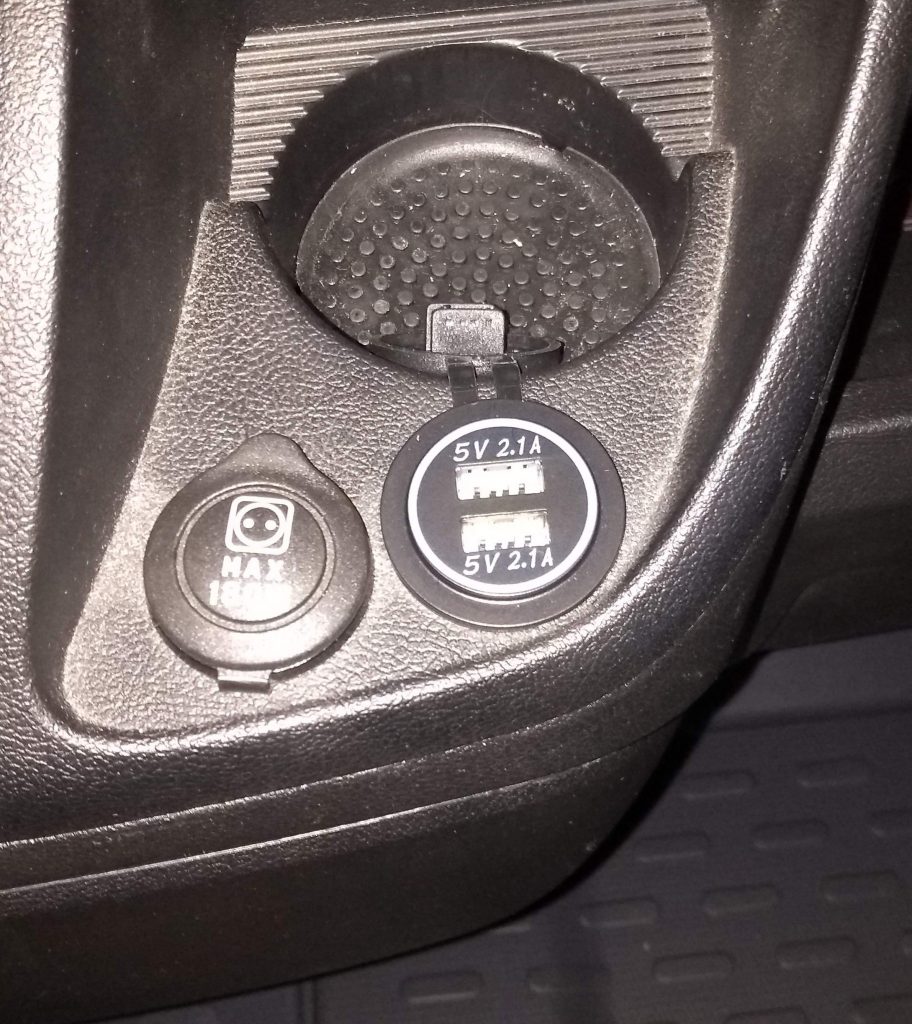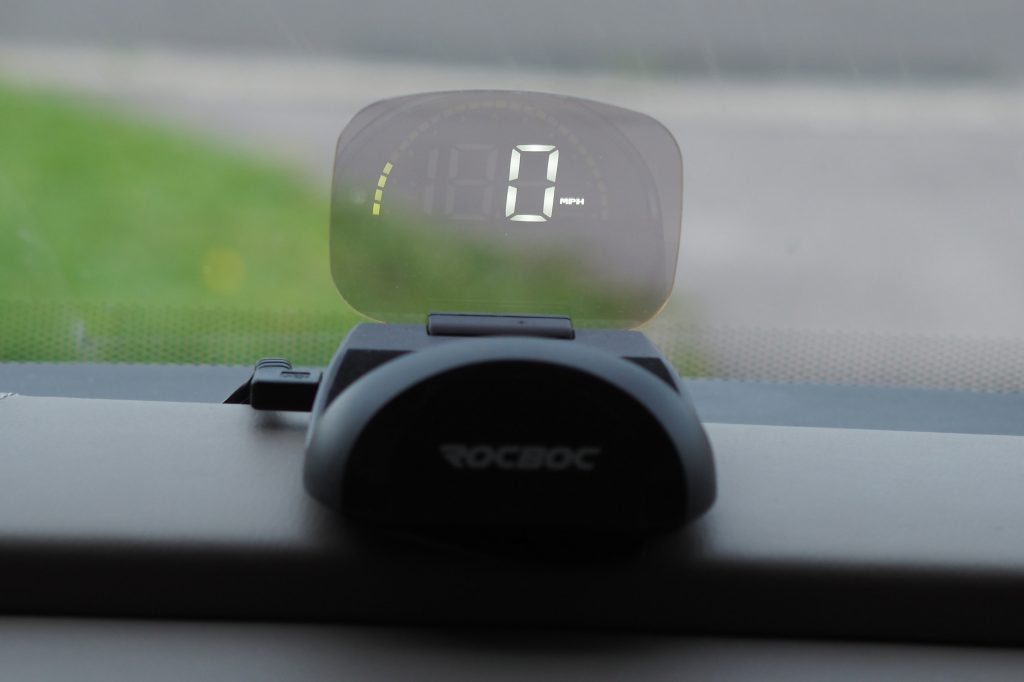We had already updated the van’s USB charging capability by adding in 2 switched USB sockets in the ‘tech’ cupboard and had added a 5Amp 4 USB socket, all connected to the leisure batteries, however, we had limited USB charging ability in the van’s cab. In the cab there is the standard Ducato 180W 12V socket alongside the unused lighter socket. Occasionally we use a double USB plug in these sockets, but decided to replace the lighter socket with a proper USB socket to provide 2 x 2.1Amp outlets.

Connecting the new socket was a breeze; the dash disassembled easily and the lighter socket was quickly removed. The crimp connectors on the new USB socket connected to the van’s wiring so no modification was necessary. The new socket is fused separately by its own 5A fuse as well as by a 15A fuse in main fuse box.
The dash display on the Ducato is not particularly well lit and looking at the speedo means taking one’s eyes off the road. The speedo reads in mph, which is not brilliant when abroad. I do use the sat-nav to tell me the speed, but there again, that means taking my eyes off the road. To provide a bigger, better, clearer display of speed we bought a HUD (head up display).

The HUD is mounted in our usual line of vision and can be powered from either USB or ODBII.
When powered by USB, the HUD estimates the vehicle speed using GPS. When powered from the ODBII socket the HUD uses the van’s on board diagnostics to display speed in mph or kph, water temperature, battery voltage, engine revs etc. We have connected ours to the ODBII socket and hidden the cable in the dash panel.
